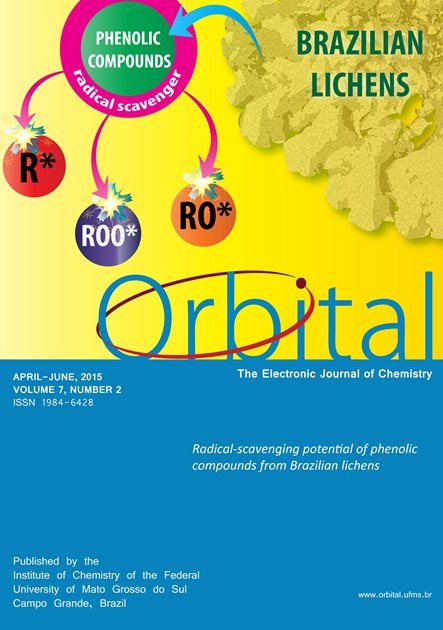Otimização de Diferentes Procedimentos de Preparo de Amostras: Aplicação na Extração de Antioxidantes Presentes em Biodiesel
- biodiesel,
- antioxidants,
- liquid chromatography,
- liquid-liquid extraction,
- solid phase extraction
Copyright (c) 2015 Orbital: The Electronic Journal of Chemistry

This work is licensed under a Creative Commons Attribution-NonCommercial-NoDerivatives 4.0 International License.
Abstract
In this work, different procedures were compared for the extraction of synthetic antioxidants such as propyl gallate (PG), tert-Butylhydroquinone (TBHQ), 3-tert-butyl-4-hydroxyanisole (BHA) and 3,5-di-tert-butyl-4 hydroxytoluene (BHT) from biodiesel samples. The efficiency of target procedures was tested using liquid-liquid extraction and solid phase extraction containing different stationary phase. To accomplish this efficiency and determine the antioxidants, a method based on high performance liquid chromatography coupled with diode array detector (HPLC / DAD) was optimized. In liquid-liquid extraction was used acetonitrile and n-hexane, however, only acetonitrile presented selectivity, able to extract just PG and BHA, with recovery between 78.3 and 96.0%. Using solid phase extraction cartridges containing C-18 as stationary phase, only the PG and BHA were extracted, which the recovery was between 52.4 and 99.7%. Moreover, the macroporous poly(divinylbenzene-co-N-vinylpyrrolidone) polymer presented satisfactory results for the extraction of PG and BHA with recovery between 77.3 and 103 %. All these procedures provided elimination of the sample interferences, allowing recovery with coefficients of variation always lower than 1.00%. However, the comparison of liquid-liquid extraction and solid phase extraction techniques proved that there are many difficulties in extracting, with precision and accuracy, the PG, TBHQ, BHA and BHT antioxidants contained simultaneously in complex samples such as biodiesel. These difficulties are increased when the interest is to reduce the costs of analysis by reducing organic solvent extractors and propose extraction techniques with considerable environmental benefits.


